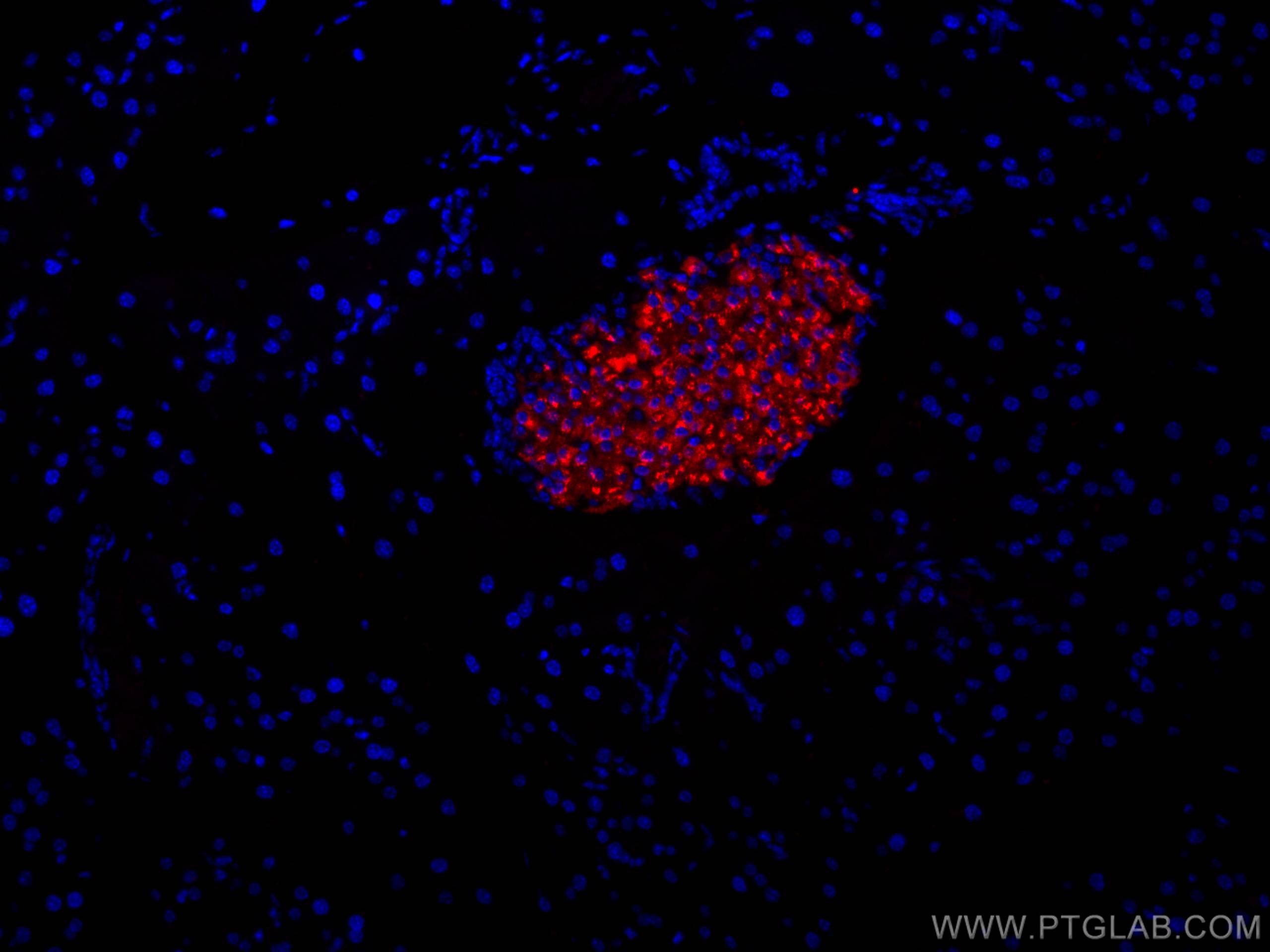Ins1 Monoklonaler Antikörper
Ins1 Monoklonal Antikörper für IF-P
Wirt / Isotyp
Maus / IgG1
Getestete Reaktivität
Maus, Ratte
Anwendung
IF-P
Konjugation
CoraLite®594 Fluorescent Dye
CloneNo.
1H2C11
Kat-Nr. : CL594-67668
Synonyme
Geprüfte Anwendungen
| Erfolgreiche Detektion in IF-P | Maus-Pankreasgewebe |
Empfohlene Verdünnung
| Anwendung | Verdünnung |
|---|---|
| Immunfluoreszenz (IF)-P | IF-P : 1:150-1:600 |
| It is recommended that this reagent should be titrated in each testing system to obtain optimal results. | |
| Sample-dependent, check data in validation data gallery | |
Produktinformation
CL594-67668 bindet in IF-P Ins1 und zeigt Reaktivität mit Maus, Ratten
| Getestete Reaktivität | Maus, Ratte |
| Wirt / Isotyp | Maus / IgG1 |
| Klonalität | Monoklonal |
| Typ | Antikörper |
| Immunogen | Ins1 fusion protein Ag29988 |
| Vollständiger Name | insulin I |
| Berechnetes Molekulargewicht | 12 kDa |
| GenBank-Zugangsnummer | NM_008386 |
| Gene symbol | Ins1 |
| Gene ID (NCBI) | 16333 |
| Konjugation | CoraLite®594 Fluorescent Dye |
| Excitation/Emission maxima wavelengths | 588 nm / 604 nm |
| Form | Liquid |
| Reinigungsmethode | Protein-G-Reinigung |
| Lagerungspuffer | PBS with 50% glycerol, 0.05% Proclin300, 0.5% BSA |
| Lagerungsbedingungen | Bei -20°C lagern. Vor Licht schützen. Nach dem Versand ein Jahr stabil. Aliquotieren ist bei -20oC Lagerung nicht notwendig. 20ul Größen enthalten 0,1% BSA. |
Hintergrundinformationen
insulin I is a peptide hormone that plays a vital role in the regulation of carbohydrate and lipid metabolism. The encoded precursor protein undergoes proteolytic cleavage to produce a disulfide-linked heterodimeric functional protein that is stored in secretory granules. An increase in blood glucose levels, among others, induces the release of insulin from the secretory granules. Mice deficient in the functional hormone encoded by this gene develop diabetes mellitus.
Protokolle
| PRODUKTSPEZIFISCHE PROTOKOLLE | |
|---|---|
| IF protocol for CL594 Ins1 antibody CL594-67668 | Protokoll herunterladen |
| STANDARD-PROTOKOLLE | |
|---|---|
| Klicken Sie hier, um unsere Standardprotokolle anzuzeigen |


